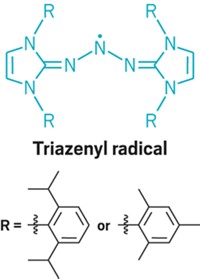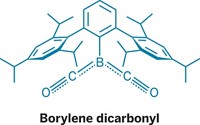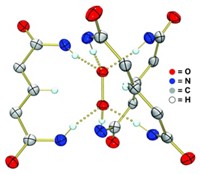Advertisement
Grab your lab coat. Let's get started
Welcome!
Welcome!
Create an account below to get 6 C&EN articles per month, receive newsletters and more - all free.
It seems this is your first time logging in online. Please enter the following information to continue.
As an ACS member you automatically get access to this site. All we need is few more details to create your reading experience.
Not you? Sign in with a different account.
Not you? Sign in with a different account.
ERROR 1
ERROR 1
ERROR 2
ERROR 2
ERROR 2
ERROR 2
ERROR 2
Password and Confirm password must match.
If you have an ACS member number, please enter it here so we can link this account to your membership. (optional)
ERROR 2
ACS values your privacy. By submitting your information, you are gaining access to C&EN and subscribing to our weekly newsletter. We use the information you provide to make your reading experience better, and we will never sell your data to third party members.
Physical Chemistry
Terminal Vanadium(III) Oxo Complex Isolated
Elusive species could reveal new proton reduction chemistry
by Jyllian Kemsley
September 8, 2014
| A version of this story appeared in
Volume 92, Issue 36
Terminal vanadium(III) oxo species likely play a key role in a number of vanadium-catalyzed reactions, including cleavage of C–C bonds in glycols and naphthol couplings, but chemists have struggled to isolate such a complex. A team led by Christopher J. Chang and Jeffrey R. Long of the University of California, Berkeley, and Mihail Atanasov and Frank Neese of Germany’s Max Planck Institute for Chemical Energy Conversion has now succeeded. The group prepared a terminal V4+(O) complex with a pentadentate polypyridyl ligand, then successfully reduced it to V3+(O) (Inorg. Chem. 2014, DOI: 10.1021/ic5010177). The V3+(O) species is dark blue and has a V–O bond length of 1.621 Å, which is among the longest terminal V–O bonds reported. The V3+(O) complex is unreactive to either hydrogen- or oxygen-transfer reagents, but it protonates to form a transient V3+(OH) species that could lead to new proton reduction chemistry. Computational analysis indicates that efforts to reduce the V3+(O) complex to try to prepare V2+(O) would instead result in transfer of one or two electrons from vanadium to the ligand.





Join the conversation
Contact the reporter
Submit a Letter to the Editor for publication
Engage with us on Twitter